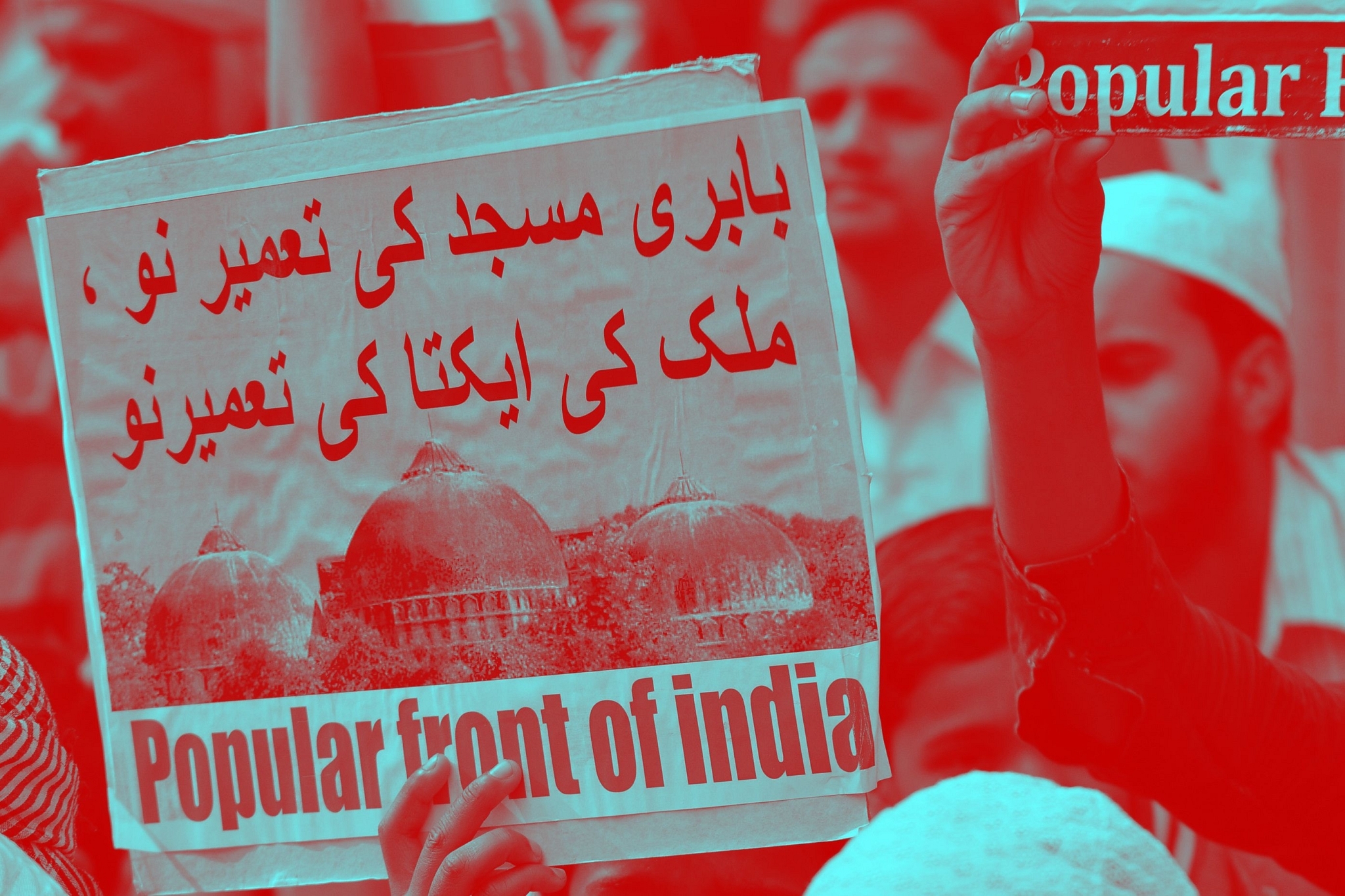Insta
Kappan Is Office Secretary Of Radical Islamist Outfit PFI And Operated Under Journalist Cover: UP Govt To SC

Activists of PFI at a rally. (Qamar Sibtain/India Today Group/Getty Images) Representative image
The Uttar Pradesh government has informed the Supreme Court that Siddique Kappan is the office secretary of Popular Front of India (PFI) and was using a journalist's cover by showing the identity card of a Kerala-based newspaper named Tejas which closed down in 2018.
The affidavit filed by the government said it was revealed "during investigation that he, along with other PFI activists and their student wing leaders were going to Hathras under the garb of journalism with a determined design to create caste divide and disturb law and order."
The UP government said the police informed Kappan's brother and his maternal uncle about his arrest. The affidavit said: "At the outset, it is stated no family member of the accused has approached the jail authorities till date for meeting the accused."
The affidavit also added that till date no lawyer has approached the jail authorities with a vakalatnama to be signed by Kappan, and during the judicial custody he had also interacted with his family members on three occasions.
The KUWJ had filed a habeas corpus petition seeking immediate release of Kappan and cited violation of Articles 14, 19 and 21. The plea claimed that on October 5, Kappan was arrested at the Toll Plaza near Hathras. He was on the way to report on the alleged rape and death of a 19-year-old girl in Hathras.
The plea filed through advocate Wills Mathews termed the arrest as illegal and unconstitutional. The journalist has been charged under the anti-terror law UAPA or the Unlawful Activities (Prevention) Act.
This news has been published via Syndicate feed. Only the headline is changed.
Introducing ElectionsHQ + 50 Ground Reports Project
The 2024 elections might seem easy to guess, but there are some important questions that shouldn't be missed.
Do freebies still sway voters? Do people prioritise infrastructure when voting? How will Punjab vote?
The answers to these questions provide great insights into where we, as a country, are headed in the years to come.
Swarajya is starting a project with an aim to do 50 solid ground stories and a smart commentary service on WhatsApp, a one-of-a-kind. We'd love your support during this election season.
Click below to contribute.
Latest